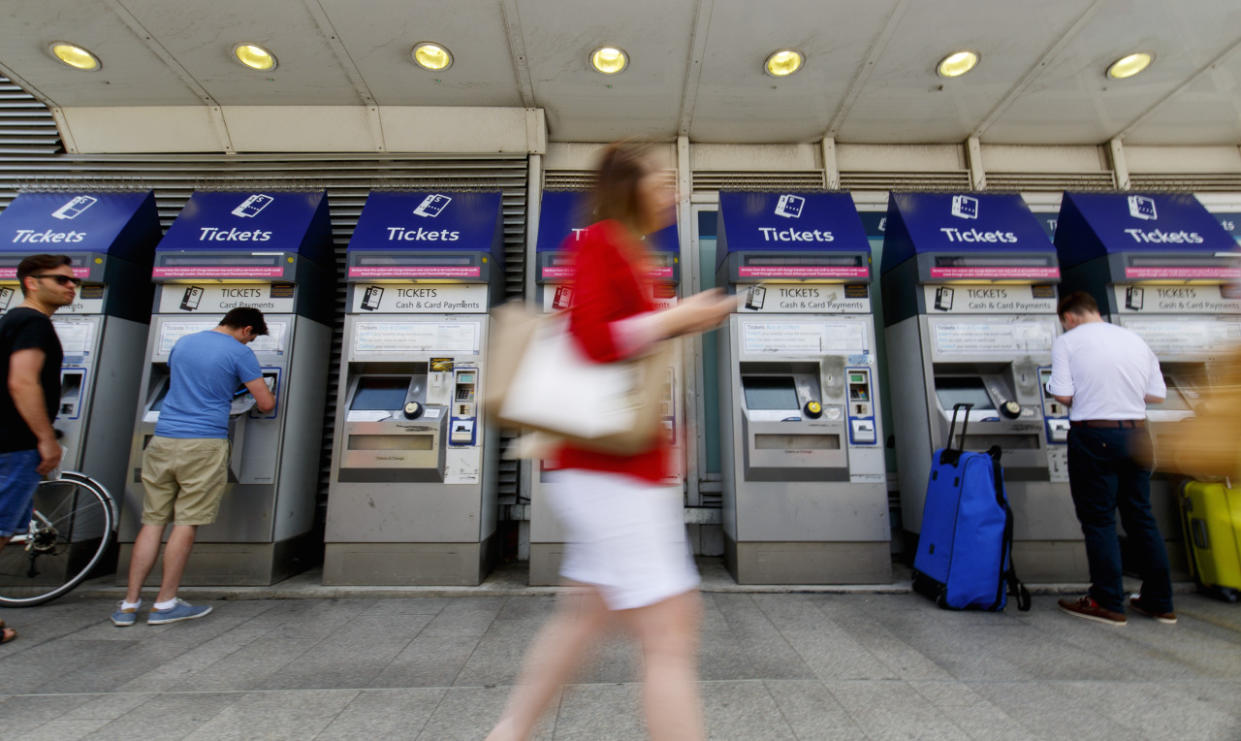5 Reasons Why British Train Fares Are So Expensive

With the news that rail fares are set to rise by 1.9% next year in England, Scotland and Wales, long-suffering passengers let out another collective sigh.
With some services already disrupted by strikes, staff shortages and engineering works (we’re looking at you, Southern) many will be wondering how an increase can be justified.
The price hike has been determined by the Retail Prices Index (RPI), which measures inflation — but trade unions say fares have increased at twice the rate of wages since 2010.
This hike includes season tickets, off-peak return tickets on long distance trips and ‘anytime’ tickets around major cities — and follows a 1 per cent increase in January this year.
While the government controls regulated fares, unregulated fares, which include many off-peak tickets, are determined by companies, and can be set as high as operators like.
But why are our ticket prices — the highest in Europe — so expensive? Here’s what rail experts, unions and politicians think.
Not enough regulation
Since privatisation of the railways — which took place between 1994 and 1997 — ticket prices having rocketed by 22 per cent, with walk-on prices on some routes up by an eye-watering 245 per cent. The Transport Salaried Staffs’ Association (TSSA) has argued private companies have simply been given a free ride to put up fares. Labour leader Jeremy Corbyn has today argued renationalisiation would cut ticket costs by 10 per cent — and there are some unlikely flag bearers for the cause. The right-leaning Times newspaper yesterday called for Govia, which owns crisis-hit Southern, to be renationalised — echoing (believe it or not) the input of some backbench Tory MPs.
A lack of private investment
Private rail companies are run, as private companies are, often with their shareholders in mind. According to a report by the Office of Rail Regulation (ORR), train operating companies paid out £183m in dividends to shareholders in 2014 — after an almost £4bn subsidiary. Three operators in particular – Virgin, Northern Rail and Transpennine – came under intense scrutiny after they gave almost £100m to shareholders after receiving more than £1bn in government subsidies. The TUC general secretary, Frances O'Grady, called it “the perfect cover up”.

Southern has cut many of its regular services (Amer Ghazzal/REX/Shutterstock)
A lack of public investment
Britain’s rail prices are consistently and significantly higher than those in Europe that are publicly owned. But one of the key factors is investment. In 2012, Sir David Higgins, the former chief executive of Network Rail, said: “For at least a couple of decades we took a holiday on renewing our railway tracks before and after privatisation. It requires 30 years of continuous investment to ensure our railways get to the level of some of the European railways that we admire.” Some estimates put government investment in the railways in Britain at half of what it is in Germany.
Inflation
Regulated train prices are set using the Retail Price Index (RPI), instead of the Consumer Prices Index (CPI) — which the campaign group Railfuture argues is unfair. Today, Bruce Williamson from the group told the Guardian: “Fares continue to outstrip real world price rises. Today’s CPI inflation figure is only 0.6%, but next January’s fares will go up by 1.9% because the government insists on using the higher RPI figure. It seems that the government is continuing to price people off the railways, reducing revenue and damaging economic growth.” The group said that fares would be around 10 per cent lower if the CPI had been used since 2005.
It’s inefficient
The McNulty report, which was commissioned by the Department for Transport and Office of Rail Regulation, found that the UK network is around 30 per cent more expensive than its European counterparts. This inefficiency, of course, links back to a lack of investment — something that, as Sir David Higgins puts it, is long overdue. The result of this is trains that are, on average, older now than they were in 1996, according to this TUC report. These older, smaller and slower trains mean more overcrowding and less value for money.
(Credit: Tolga Akmen/LNP/REX/Shutterstock)

 Yahoo News
Yahoo News 
